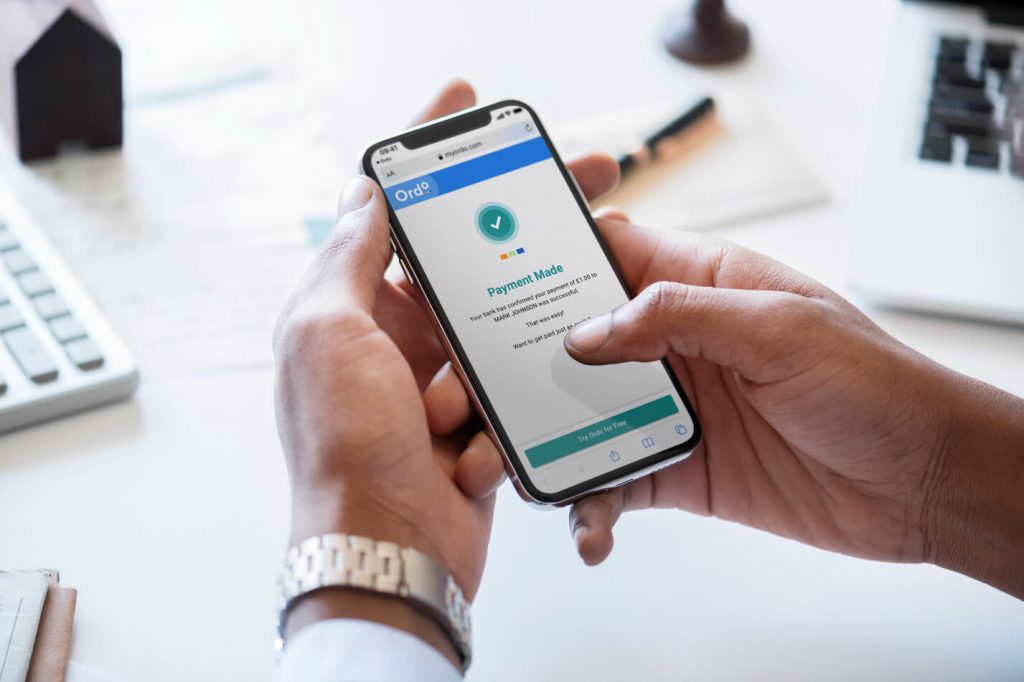This is what is going to be covered in this 4-part series:
- Part I – Today and Today’s Challenges – why organisations need to grasp this opportunity and demand better
- Part II – The future – the new kid on the payments block, ‘Variable Recurring Payments’ (VRP), and how VRP can deliver enhanced services over and above the limitations of using Direct Debit, reaping benefits for businesses and their customers
- Part III – WIIFM? What’s in it for me, and why businesses need to keep ahead of the competition and adopt now to retain their customers and deliver growth
- Part IV – the Regulatory drivers – how are we going to get to the future?
Missed Part 1? Catch up here – Today and Today’s Challenges – why we need to grasp this opportunity and demand better.
To recap, in Part 1 of this series on the Future of Direct Debit, the once in a generation chance within touching distance this year was discussed. This comes on the back of a New Payments Architecture being procured, and is what will keep the UK at the forefront of FinTech: regular and irregular repeated Open Banking payments… i.e. the provision of a dynamic, low cost alternative to the convenient for some, unavailable and undesirable to others, multi-working day payment mechanism, the Direct Debit.
And what is the alternative to this old traditional payment method? The answer is Variable Recurring Payments, or VRP, and this is what we’re going to be talking about in Part II. Now is the time to seize the low cost, low risk opportunity to bring further competition and innovation into banking and payments in the UK, and bring the CMA’s banking competition remedies mandate of delivering new much needed services and benefits for users comprehensively across the payments landscape.
Overview
Businesses and their end customers are asking for new types of bank payments that can move funds in real time, keep end-customers fully in control of their finances, and yet allow business payments to transfer safely and securely, with the minimum of friction.
TPPs like Ordo are live with multiple Open Banking powered solutions for single immediate payments today, delivering services such as Request to Pay billing and invoicing, QR Code Point of Sale, Pay by Link and eCommerce “Pay Now” buttons. Wherever Open Banking is used, there will be a lower cost for payment collections (c80% less than cards), liquidity optimisations with real-time transfer, indirect cost and time savings from automatic reconciliation, better security, and delightful customer UX.
In this Part II, we concentrate on the trail Open Banking is going to blaze next….an enhanced, lower cost and real time Direct Debit – a possibly variable but repeated payment, or so-called Variable Recurring Payments, VRP.

Direct Debits Successor – Variable Recurring Payments (VRP)
With the cost of living crisis now a reality, inflation at the time of writing exceeding 11%, be it the fuel being bought on the forecourt, the energy being consumed in homes and offices, either by you or your customers, somewhere along the line people are feeling the pinch and will be cutting costs and looking for savings. If you’re supplying businesses with payment infrastructure, or a business collecting payment yourself, you can’t afford not to be saving direct and indirect costs where you can. And payments are the new easy way to do that: in the immediate term, there’s Open Banking single immediate payment capability, and Variable Recurring Payment (VRP) Sweeping solutions, (for an explanation of Sweeping – see our blog post here) available today, and going into next year, it’s the wider successor to Direct Debit….Variable Recurring Payments for all use cases of payment.
Conceptually, the successor to Direct Debit (being termed Variable Recurring Payments) is an extension to Open Banking enabled Request to Pay services. With a Request to Pay service for a single payment request, each Request to Pay generated by the billing business needs to be satisfied by the end-customer (payer) authorising an Open Banking single immediate payment set up by their chosen TPP (eg Ordo) on behalf of the biller (white labelled for the biller, so the payer is familiar with the payment request) using their own bank’s mobile or internet banking service to pay the specific request. The request is routed to the end-customer using their email address or mobile number, or by sharing a QR Code with them either displayed in person, by email or across any messaging networks such as iMessage, WhatsApp, Signal, Line etc.
TPPs or Third Party Providers, were created under legislation, the 2nd Payment Services Directive (PSD2). TPPs are authorised and regulated by the FCA with assessed and approved business and security models, and people, so you can be sure they’re fit and proper with secure systems. Only TPPs regulated by the FCA can provide Open Banking payment services, so you know they’ll be as safe as bank systems.
For a Variable Recurring Payment, the initial set up of the service by the biller is similar, except that it also seeks explicit approval from the end-customer for future payment requests that will be sent by the business or organisation. This approval may include a maximum pre-authorised payment value and frequency. Provided that they are happy, the end customer provides approval in the same way they approve a single payment and their bank records the specifics of the mandate for the ongoing collection of multiple payments.
The next time the biller wishes to collect money, their TPP (see jargon buster above) makes a Variable Recurring Payment API call to the end-customer’s bank. Provided that the agreed mandate is still in place, and the payment is consistent with the mandate, then the end-customer’s bank makes the required payment in real time over the Faster Payments rails, this time without needing to seek a new transaction approval from the end-customer. Provided that the end-customer has sufficient funds in their account, this will deliver a real time payment to the biller.
All being well, and where the end-payer is happy to continue receipt of the goods or service being received and therefore content to continue paying, the mandate stands, payment is automatically collected by the biller and is made directly from the payer’s account in real time. Everyone knows where they are with their money, income and outgoings, as there’s no multi-day cycle, it’s all instant.

At any time, the end-customer, either through their own bank’s mobile or internet channel, or via the TPP, can cancel the agreement, much like they would cancel a Direct Debit if they terminated a service. However, whereas cancelling a Direct Debit is also a multi-week process and often elicits the production and sending of much automated paperwork, confusion, cost and bad faith for both parties, using Open Banking powered VRP, setting up and cancelling is done in real time – no confusion, no delay. And what if the payer has a change of heart and wants to continue the service? Under subsequent payment collection attempts by the biller where a VRP agreement has been cancelled, each payment can continue where individually authorised by the end-customer, until the end-customer provides a new VRP authority via their TPP or bank channel, or wishes to decline.
Customers want more capability to manage their finances intra-day, as they have with financial oversight through online banking and banking apps available on their smartphones. So where the payer feels in control of the payment authorities on their account, and that they can control what’s being paid out dynamically, it being adjustable to flex to life circumstances, it’s more likely the business relationship will continue for the long term; this is far more desirable that the bilateral blunt pay or cancel options available with Direct Debit, especially as we navigate through yet more turbulent times taking their toll on our domestic economy and standards of living.
The VRP management and payments rules are integral to the OBIE’s VRP specification. And TPPs that offer full VRP managed services will handle all the heavy lifting of tech integration, white labelled customer journeys and transaction history ensuring VRP parameters are adhered to; with this level of service, there’s very little the biller has to do their side, except enjoy lower cost receipt of cleared funds in real time, and less resource needed to manage it all!
What is OBIE?
The Open Banking Implementation Entity is the central orchestration body set up by the Competition and Markets Authority (CMA). Their purpose is to implement the CMA’s Order to make sure the 9 largest banks and building societies in the UK (called the CMA9) enable these Open Banking services to become a reality. OBIE is not-for-profit, manages the ongoing performance of the CMA9 to the Open Banking specs, and will be succeeded by an oversight standards body independent from the CMA9 and TPPs. At the moment, that’s being dubbed: ‘The Future Entity’ whilst regulators consult as to what exactly that should look like in the future.
So what does this mean for UK businesses and their FinTech partners?
With these structures and models, and the enhancements VRP demonstrates over and above Direct Debit, it is undeniable that now is the time for businesses to take stock of the tech they have for collecting payment. With a Pandemic that caused 80% of people to give themselves a ‘Financial MOT’ concluding in 40% of people saying they’ve already cancelled, or are about to cancel, at least one Direct Debit with most of those not being put back, it’s imperative for businesses to use the comprehensive managed tech services available with that require minimal tech build required, and which will lower their cost base and help them plug that gap in customer sign up and retention.
In our following episodes, we’ll consider:
- Part III – WIIFM? What’s in it for me, and why businesses need to keep ahead of the competition and adopt now to retain their customers and deliver growth
- Part IV – the Regulatory drivers – how are we going to get to the future?
If not Open Banking and VRP, businesses and organisations need to ask themselves, how are they faring against the competition or in the delivery of services if they’re not taking all steps to optimise liquidity, delight customers and build long lasting trusted relationships, cutting direct and indirect costs in their payment collections; how are they doing this without compromising service?
Get Part I here – Today and Today’s Challenges – why we need to grasp this opportunity and demand better.



